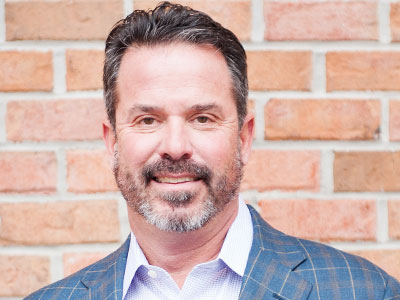

Innovation
Are drones the future of organ transportation?
High-flying hopes
When Trina Glispy received a kidney at the University of Maryland Medical Center, she made history. After waiting eight years for a successful match, the 45-year-old Baltimore resident volunteered in 2019 as the first patient to be gifted with an organ that was delivered to the downtown academic teaching hospital via drone.
“This whole thing is amazing,” she said moments before being wheeled into the operating room. “Years ago, this was not something that you would think about.”
On that early April morning, the mother of three joined a growing community of courageous patients who have helped advance the field of transplant technology. She also helped realize the dream of a multidisciplinary team of experts—led by University of Maryland Medical Center transplant surgeon Joseph Scalea, M.D.,—for whom years of research, technological development, testing, and exhaustive planning culminated in this pioneering first flight.
It was an idea, however, that was borne of frustration.
Imagining a better way of organ transportation
Like all transplant surgeons, Scalea, who is also an assistant professor of surgery at the University of Maryland School of Medicine, has spent his career contending with organs’ most implacable enemy—time. The story follows a familiar narrative: a successful match is identified, but getting the organ to the recipient demands navigating a complex web of organ transportation. In a world where cars can be summoned with a tap of a phone and packages delivered in a matter of hours, moving an organ still involves a cobbled-together system, in which cancelled flights and traffic jams can mean the difference between life and death. Every hour of cold ischemia time, or CIT, increases the risk of diminished organ quality and transplant complications. Scalea recalls once waiting 29 hours for an organ to make its way from Birmingham, Alabama to Baltimore—a flight that should take about four hours.
“It’s one of the biggest problems in modern medicine,” he said, noting that CIT is the second most common reason that more than 400 kidney organ offers are turned down every year at the University of Maryland Medical Center.
Motivated by years spent waiting for organs and continued frustration over lost opportunities, Scalea began to imagine a new way. He envisioned a nationwide on-demand system, which would be seamlessly managed through smart phones, using unmanned drones (also known as unmanned aerial vehicles, or UAVs) for transport. Scalea dreamed that with a few taps of an app, a transplant surgeon could assess an organ offer, accept it and initiate the transport process via UAV. Through the app, the surgeon could monitor real-time data such as organ temperature, GPS location and other vital information until the UAV arrived safely at the hospital.
Companies around the world are already using UAVs to advance health care and save lives. California-based medical product delivery company Zipline, for example, operates a network of UAVs that deliver medicine and blood supplies to remote health clinics in Rwanda and Ghana. In the fall of 2019 in the U.S., following a pilot program that made hundreds of test flights around the WakeMed Health and Hospitals campus in North Carolina, UPS Inc. was awarded Federal Aviation Administration approval for UAV delivery of packages containing blood and tissue samples on medical campuses around the country.
“We owe it to patients and to the community to push past what is considered conventional in organ transplantation transportation and use data tracking to improve results,” said United Network for Organ Sharing chief medical officer David Klassen, M.D. “There is more work needed to be done before drone transport can be a reality, but because there’s such a huge potential for reducing organ wastage and saving more patients, it’s absolutely worth pursuing.”
The future Scalea envisions also includes a new approach to the transplant process, in which local surgeons would perform organ recovery. By keeping transplant surgery teams out of the air and moving organs directly from point to point, Scalea believes that the organ transplant network could be made faster, safer, and more cost-effective.
“You could get higher quality organs transplanted more frequently,” he said. “We think as many as 2,500 kidneys a year could be added to the pool.”
“Make it happen”
It’s one thing to have a bold vision. It’s another to build an entirely new, nationwide organ transport system from scratch using a still young technology. The logistical, technological, and regulatory issues to be addressed would be dauntingly complex, and Scalea is a busy surgeon whose expertise is in transplant, not transport. He might easily have left his vision at just that—a vague idea of what could be.
Instead, in 2016, Scalea set out to prove his idea was possible, seeking funding, enlisting experts, and turning to the University of Maryland A. James Clark School of Engineering to enroll researchers from the Department of Aerospace Engineering and the Unmanned Aircraft Systems Test Site. “Get a bunch of people who are smart who can help you answer the questions, and make it happen,” Scalea said. Eventually, the team would come to include nearly 100 individuals working together toward a shared goal.
It’s one thing to have a bold vision. It’s another to build an entirely new, nationwide organ transport system from scratch using a still young technology.
“The amount of teamwork that it took to make this happen was really unbelievable,” Scalea said. “Everyone rallied, everyone carried the flag for a period of time, and everyone saw the very clear finish line. And everyone understood their role in the process of how to get there.”
The team designed a custom-built UAV with fail-safes that included redundant rotors and a parachute to ensure consistently reliable performance, even in the case of a possible component failure. In addition, Scalea’s group developed technology for real-time remote monitoring of the organ, flight conditions, and UAV location.
After 44 test flights and three years of extensive refining, the team was ready for its first flight.
Joseph Scalea, M.D., University of Maryland Medical Center transplant surgeon, pictured next to a prototype of the drone developed by a multidisciplinary team of experts.
Flying into the future with organ transportation drones
In the pre-dawn darkness of April 19, 2019, Glispy’s new kidney would travel 2.8 miles from the Living Legacy Foundation of Maryland organ procurement organization to the University of Maryland Medical Center’s rooftop landing pad.
Scalea recalls gathering with the team of flight-landing crew members, medical personnel and engineers on the hospital roof. As they anxiously scanned the sky for the first distant flash of light that would signal the drone’s approach, “High Hopes,” by Panic! At the Disco played from a Bluetooth speaker, part of a custom playlist that Scalea created to help pass the time.
At last, nine minutes and 52 seconds after launch—“it felt like 90,” Scalea said jokingly—the drone landed on the helipad, greeted by whoops, cheers and applause. Scalea estimates it would have taken at least twice as much time to deliver the kidney by ground transport. Within a few minutes, Scalea, beaming, gave an elated thumbs-up to the crew, the safely delivered organ package held tightly by his side. Within a few hours, the kidney would be transplanted, offering Glispy new hope for her future.
“The University of Maryland organ transport project is incredibly important,” said Charlie Alexander, president and CEO of the Living Legacy Foundation of Maryland. “If we can prove that this works, then we can look at much greater distances of unmanned organ transport. This would minimize the need for multiple pilots and flight time, and address safety issues we have in our field.”
Glispy was discharged from the hospital on April 23, four days after receiving her new kidney.
Though it was a distance of only a few miles, the flight served as an important milestone in demonstrating that UAV transport of organs “is not some pie-in-the-sky dream,” Scalea said. “We actually did it.”
From vision to reality
And that success has served as a catalyst. In 2019, Scalea co-founded MissionGO along with impact investor Scott Plank and logistics expert and retired Navy commander Tony Pucciarella. MissionGO is a highly disruptive company that provides life-critical organ transportation using drones. “The early medical focus is on the transportation of human organs,” Scalea said.
More recently, Scalea and his partners also co-founded MediGO, an organ transplantation logistics company that enables stakeholders across the transplantation continuum to track organ shipments regardless of how the organ is shipped and communicate in real time, as well as monitor shipment quality, to safeguard the irreplaceable gift of life from donors and donor families.
“MediGO provides the first comprehensive organ management system for the transplant community,” Scalea said, adding that he expects the company to help organ procurement organizations and surgeons better plan for surgery, and help inform important aspects of organ shipment.
“We are commercializing the organ tracking software and hardware that informs all transplant stakeholders about the location and status of shipped organs,” he said. “The super exciting part about it is that, once everybody is assimilated on the platform, the utilization of unmanned organ shipment will become a reality.”
Disclaimer: Any reference obtained from this article/publishing to a specific product, process, or service does not constitute or imply an endorsement by UNOS of the product, process, or service, or its producer or provider. The views and opinions expressed in any reference do not necessarily state or reflect those of UNOS.



